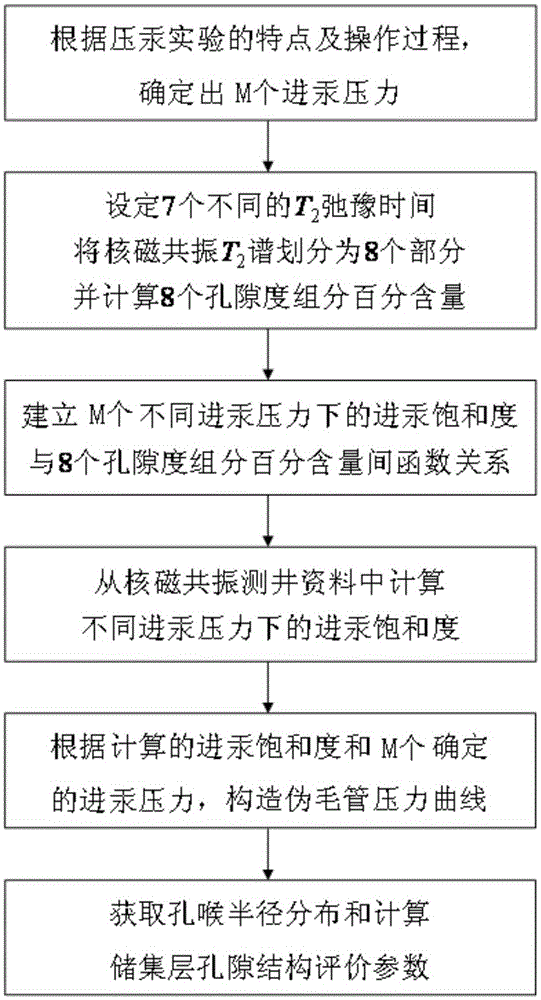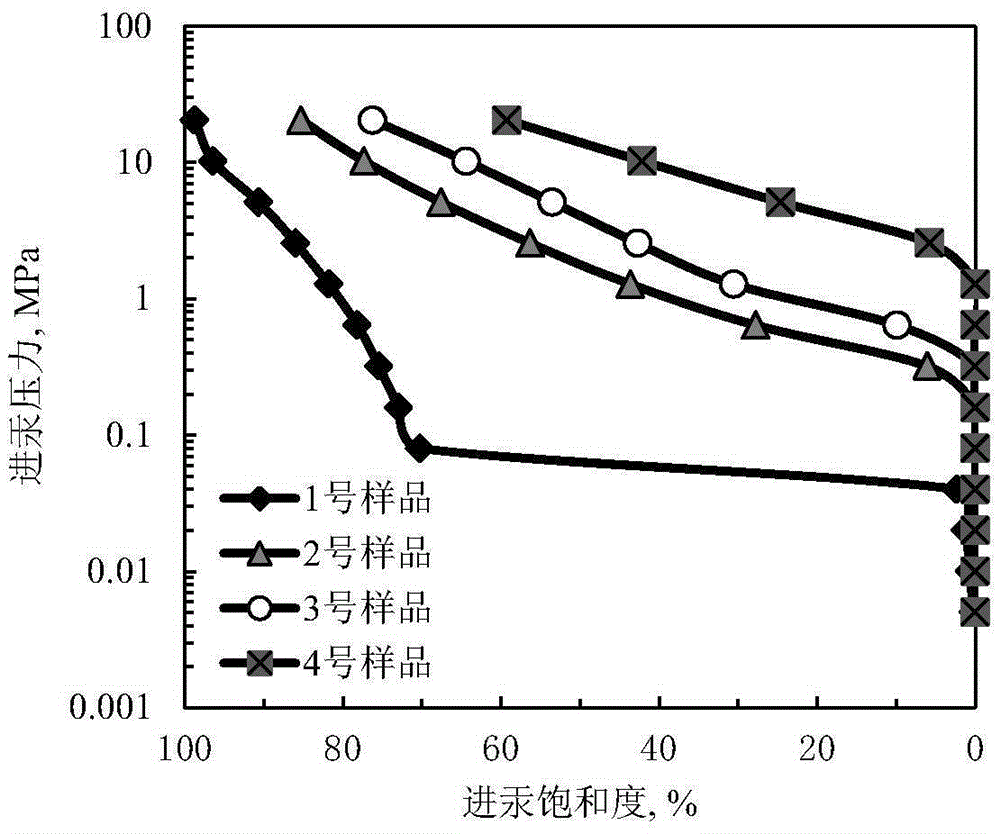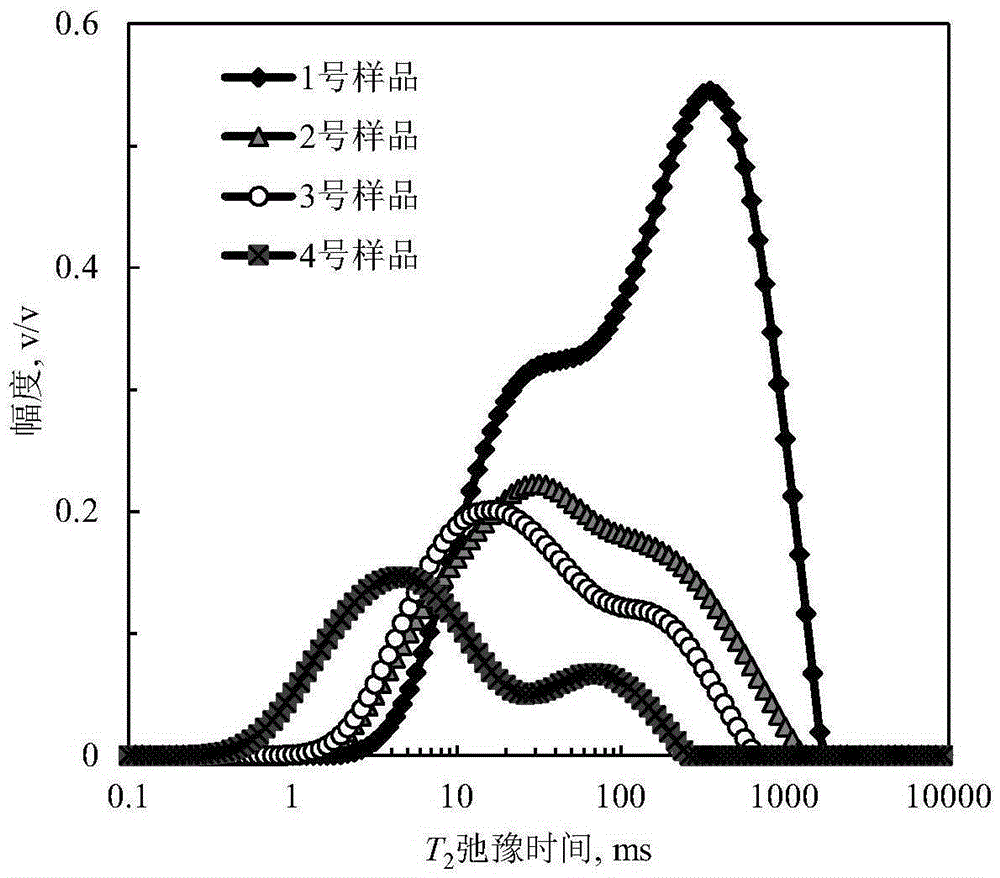Method for constructing pseudo capillary pressure curves by using NMR (nuclear magnetic resonance) logging
A technology of capillary pressure curve and nuclear magnetic resonance, which is applied in the directions of measurement, earthwork drilling and production, wellbore/well components, etc., can solve the difficulty of increasing the pseudo-capillary pressure curve, direct acquisition of permeability parameters, and the inability to achieve accurate quantitative evaluation of reservoirs Layer pore structure and other issues
- Summary
- Abstract
- Description
- Claims
- Application Information
AI Technical Summary
Problems solved by technology
Method used
Image
Examples
Embodiment 1
[0065] see figure 1 , a method for constructing a pseudo-capillary pressure curve using nuclear magnetic resonance logging, the steps are as follows:
[0066] 1) According to the characteristics and operation process of the mercury injection experiment, 13 mercury injection pressures were determined;
[0067] 2) Using nuclear magnetic resonance logging tools to measure the target reservoir and invert to obtain the actual measured nuclear magnetic resonance logging T 2 Spectrum;
[0068] 3), given 7 different T 2 relaxation time T 2 (1), T 2 (2), T 2 (3), T 2 (4), T 2 (5), T 2 (6) and T 2 (7), the NMR T 2 The spectrum is divided into 8 parts, and then the percentage content of 8 porosity components is calculated;
[0069] 4) Establish the functional relationship between mercury saturation at 13 different mercury injection pressures and the percentage content of 8 porosity components, and use it to calculate 13 mercury saturation values from nuclear magnetic resonan...
Embodiment 2
[0088] According to the method of constructing pseudo-capillary pressure curve using nuclear magnetic resonance logging described in the present invention, 20 rock core samples drilled from a certain reservoir in Southwest China are processed, and the coefficient matrix and constant matrix in the mercury saturation calculation formula are calibrated Numerically, a model for the capillary pressure curve of the continuous construction was obtained. Using the calibrated model to process the measured NMR logging data, a continuous pseudo-capillary pressure curve is obtained. In order to evaluate the reliability of the capillary pressure curve structure model, the pseudo capillary pressure curves corresponding to the depths of 20 core samples were read and compared with the experimental mercury injection capillary pressure curves.
[0089] see Figure 4 to Figure 6 , respectively enumerating three types of representative core mercury injection capillary pressure curves with good p...
PUM
 Login to View More
Login to View More Abstract
Description
Claims
Application Information
 Login to View More
Login to View More - R&D
- Intellectual Property
- Life Sciences
- Materials
- Tech Scout
- Unparalleled Data Quality
- Higher Quality Content
- 60% Fewer Hallucinations
Browse by: Latest US Patents, China's latest patents, Technical Efficacy Thesaurus, Application Domain, Technology Topic, Popular Technical Reports.
© 2025 PatSnap. All rights reserved.Legal|Privacy policy|Modern Slavery Act Transparency Statement|Sitemap|About US| Contact US: help@patsnap.com



